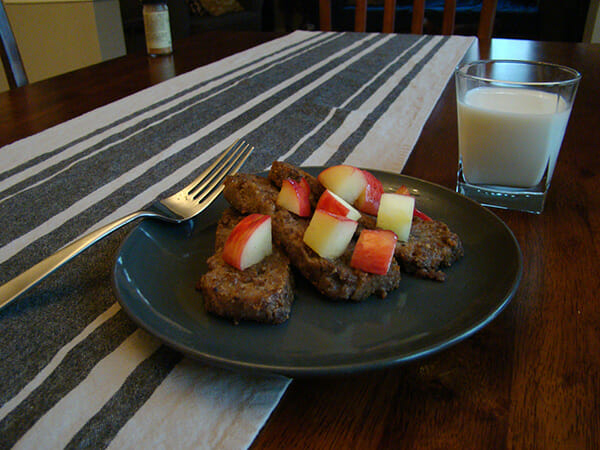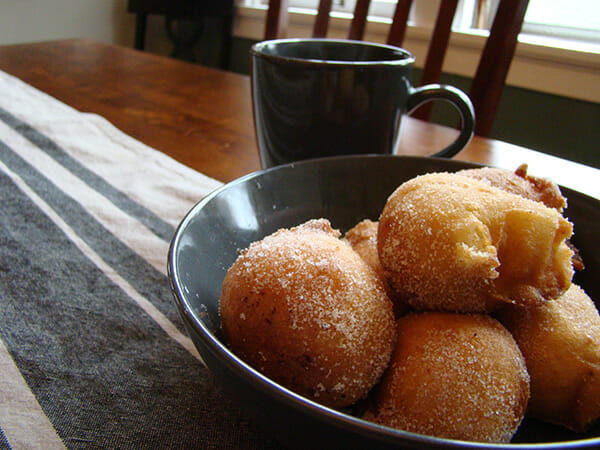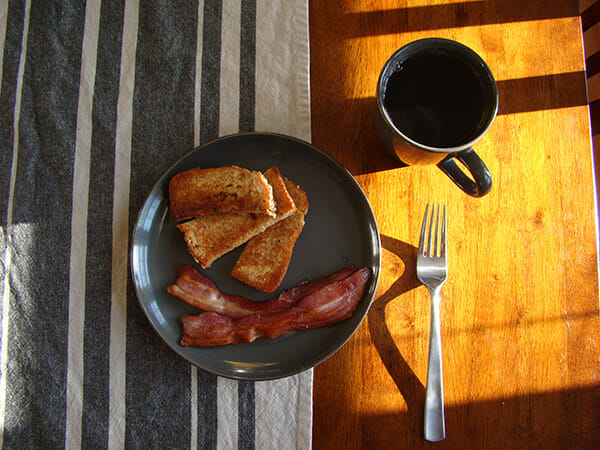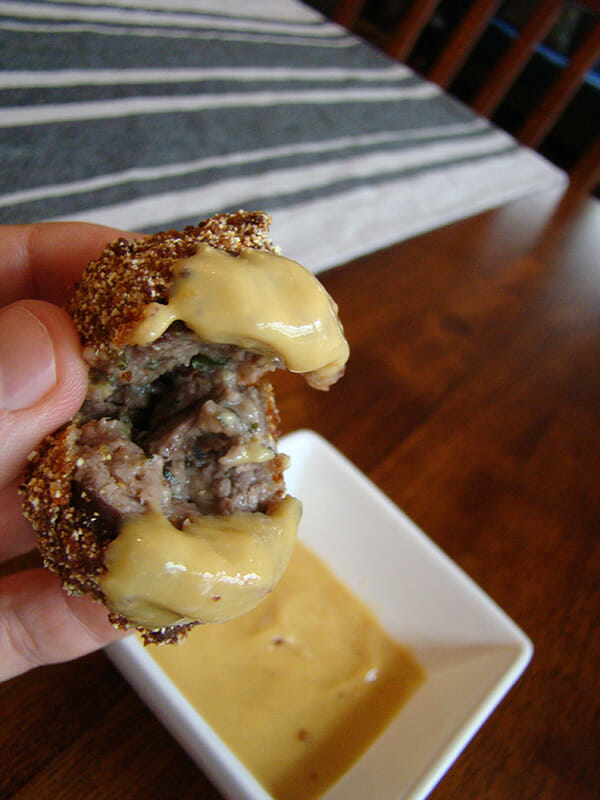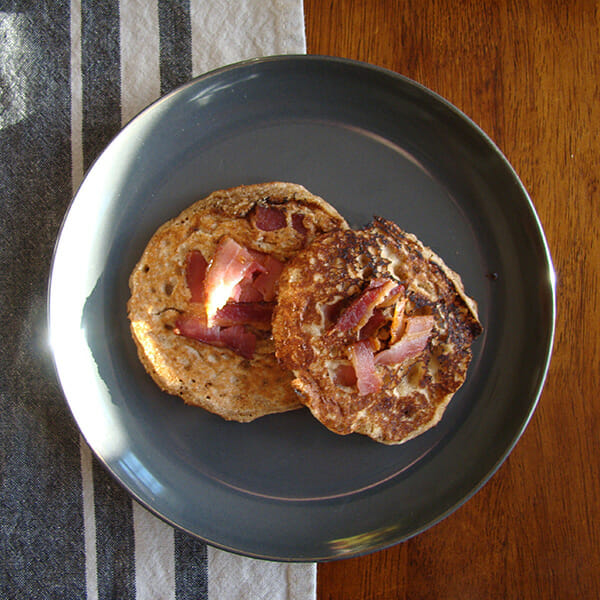A few deep-fried dutch delicacies.
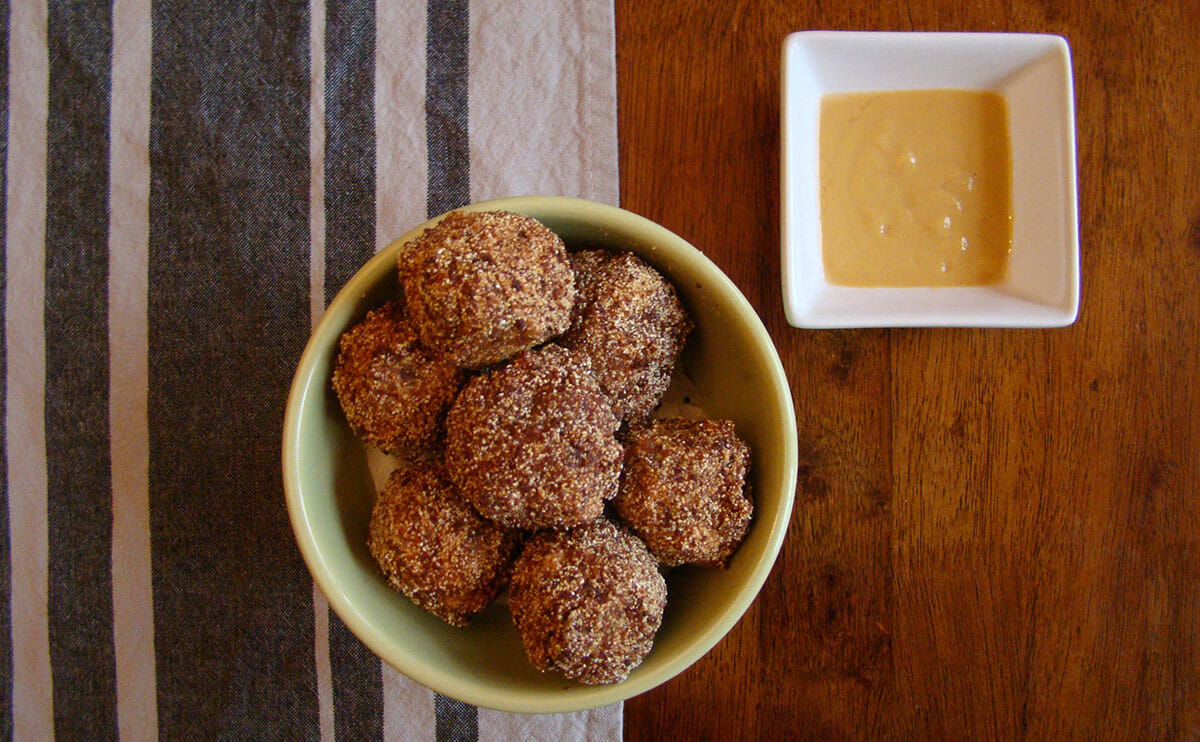
Take the kaassoufflé, a thin strip of fried cheese often served on a bun, or the belove kroketten, basically fried gravy, appearing in Dutch McDonalds as the “McKroket.” Fried food is so popular in Holland that heated vending machines, FEBOs, are stationed throughout the country, ready to dispense fried treats at a euro’s drop.
A century ago, waves of Dutch immigrants settled in cohesive farming communities in Michigan and Iowa, bringing with them the prototypes for these fried foods. I grew up in one of these communities and recently returned to the Dutch section of a church cookbook to discover old country fried foods — some of which aren’t much eaten in the Netherlands today.
[mf_h5 align=”center” transform=”uppercase”]Balkenbrij[/mf_h5]
When I was growing up, the heavy word balkenbrij loomed in my imagination. The Dutch version of scrapple, this scrap-meat loaf was associated by my parents’ generation with the olden days, and they’d grimace as they spat the word, often followed with a yuck, gross, or fies. When their grandparents and great-grandparents were still struggling farmers, any bit of leftover meat from a hog or a cow would be boiled, mixed with buckwheat flour, cooled into a loaf, and then — as with most of these recipes — sliced, fried in lard and topped with syrup.
One church cookbook recipe calls for nothing but “1 Beef” and “1 Pork,” with instructions not for the queasy: ”Boil all of the bones until meat comes off. Drain juice and let set overnight. Take off lard. Boil heart, liver, and tongues. Cool. Grind all the meat and add cracklings.” Other recipes call for nutmeg, allspice, cloves, and cinnamon, a cider-like mix of spices that work oddly well with the salty meatloaf and the sweet syrup.
For my parents’ generation, balkenbrij is an anachronism in its old-world grinding up of unmentionables into a single weird brick. For me, the anachronism is its sheer resourcefulness, gathering up and transforming supposed “waste.” Not the healthiest, but Iowa winters are harsh, after all, and some fat on the bones is niet zo slecht.
[mf_h5 align=”center” transform=”uppercase”]Olliebollen[/mf_h5]
Like donut holes, but denser and often filled with raisins, “oil balls” have a funnier name and history. During the Yuletide period between Christmas and New Year’s, legend goes, olliebollen were offered to appease the Germanic goddess Perchta, who’d try to slice open mortal bellies according to her Wagnerian whims. Conveniently enough, the fat in olliebollen would slide her sword harmlessly away. (Next time someone disapproves of fatty foods, tell them that vengeful Saxon gods lurk about.) Dutch-Americans don’t confine olliebollen to the Christmas season, but will eat them whenever the spirit moves them to fire up the deep fryer.
[mf_h5 align=”center” transform=”uppercase”]Vetenstroop[/mf_h5]
As with most of these foods, the name is simple: “fat n’ syrup.” The recipe is simple too: fry bacon, fry spare bread in the grease, and eat it all up with syrup. Porous bread threatens to sponge up lots of fat, but good vetenstroop shouldn’t be soaked. Keep it light and crisp with this morning comfort food.
[mf_h5 align=”center” transform=”uppercase”]Bitterballen[/mf_h5]
Still immensely popular in the Netherlands today, bitterballen are made by forming chopped beef and a broth roux into small balls, which are then breaded, deep fried, and served with mustard. Many of these recipes combine spices normally reserved for ciders or baked goods with meats, and though Americans are often turned off by this hybridization of savory and sweet, bitterballen aren’t the same without nutmeg. For color, flavor, and Hawkeye pride, I mix some cornmeal in with the breadcrumb batter.
[mf_h5 align=”center” transform=”uppercase”]Speckendicken[/mf_h5]
Speckendicken is a sausage- or bacon-sprinkled pancake traditionally eaten between Christmas and New Year’s by those who have heritage in Frisia, a coastal region that spans northern Germany and the Netherlands. Because many Dutch-Americans emigrated from the Netherlands’ northern province of Friesland, this intensely regional recipe is still found in many cookbooks, but can also be found in German-American communities of the Midwest that grew up speaking “Friesland German.” The key to speckendicken is anise, but only een klein beetje.
Now, plug in the deep fryer and smaak lekker.
